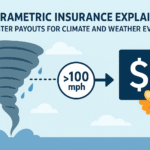Introduction
Telematics and usage-based insurance (UBI) have revolutionized the insurance industry in recent years. By collecting and analyzing data from vehicles, insurers can now offer personalized pricing and risk assessment for their customers. In this article, we will explore the impact of telematics and UBI on insurance pricing and risk assessment.
Telematics: The Basics
Telematics is a technology that enables the collection and transmission of data from vehicles. This data includes information about driving behavior, such as speed, acceleration, braking, and cornering. It can also include data on the time and location of each trip.
Telematics devices are typically installed in vehicles and use GPS and cellular technology to transmit data to insurance companies. Some insurers also offer smartphone apps that can collect the necessary data without the need for a separate device.
Usage-Based Insurance: Personalized Pricing
Usage-based insurance, also known as pay-as-you-drive or pay-how-you-drive insurance, is a type of auto insurance that uses telematics data to determine premiums. Unlike traditional insurance policies that rely on factors such as age, gender, and location, UBI policies take into account individual driving behavior.
With UBI, drivers who demonstrate safe driving habits can benefit from lower premiums, while those with riskier driving behavior may face higher rates. This personalized pricing approach allows insurers to reward responsible drivers and incentivize safer driving habits.
Impact on Risk Assessment
Telematics and UBI have had a significant impact on risk assessment in the insurance industry. By analyzing data on driving behavior, insurers can gain valuable insights into individual risk profiles. This data-driven approach allows insurers to more accurately assess the likelihood of accidents and claims.
Traditionally, risk assessment was based on general demographic factors, such as age and location. While these factors still play a role, telematics data provides a more nuanced and individualized view of risk. For example, a young driver with safe driving habits may be considered lower risk than an older driver with a history of speeding.
By incorporating telematics data into risk assessment, insurers can better align premiums with actual risk. This benefits both insurers and policyholders. Insurers can more accurately price their policies, reducing the likelihood of underwriting losses. Policyholders, on the other hand, have the opportunity to save money by demonstrating safe driving habits.
Challenges and Concerns
While telematics and UBI offer many benefits, there are also challenges and concerns associated with their implementation. One concern is the privacy of drivers’ data. Insurers must ensure that data collection and usage comply with privacy regulations and that drivers’ personal information is protected.
Another challenge is the potential for data misuse or misinterpretation. Insurers must have robust data analysis processes in place to ensure that the insights derived from telematics data are accurate and reliable. This includes addressing issues such as data quality, data security, and data interpretation.
The Future of Telematics and UBI
The use of telematics and UBI is expected to continue to grow in the insurance industry. As technology advances and becomes more affordable, more insurers are likely to adopt these data-driven approaches to pricing and risk assessment.
In addition to auto insurance, telematics and UBI have the potential to impact other areas of insurance as well. For example, telematics data could be used to assess risk and price premiums for commercial fleets or to offer personalized policies for homeowners based on home security data.
As the industry evolves, it will be important for insurers to stay up-to-date with technological advancements and regulatory changes. By embracing telematics and UBI, insurers can better serve their customers and improve their overall business performance.
Conclusion
Telematics and usage-based insurance have transformed the insurance industry by enabling personalized pricing and risk assessment. By collecting and analyzing data on driving behavior, insurers can offer tailored premiums based on individual risk profiles. While there are challenges and concerns associated with the implementation of telematics and UBI, the benefits for both insurers and policyholders are significant. As technology continues to advance, telematics and UBI are likely to become even more prevalent in the insurance industry, shaping the future of pricing and risk assessment.










